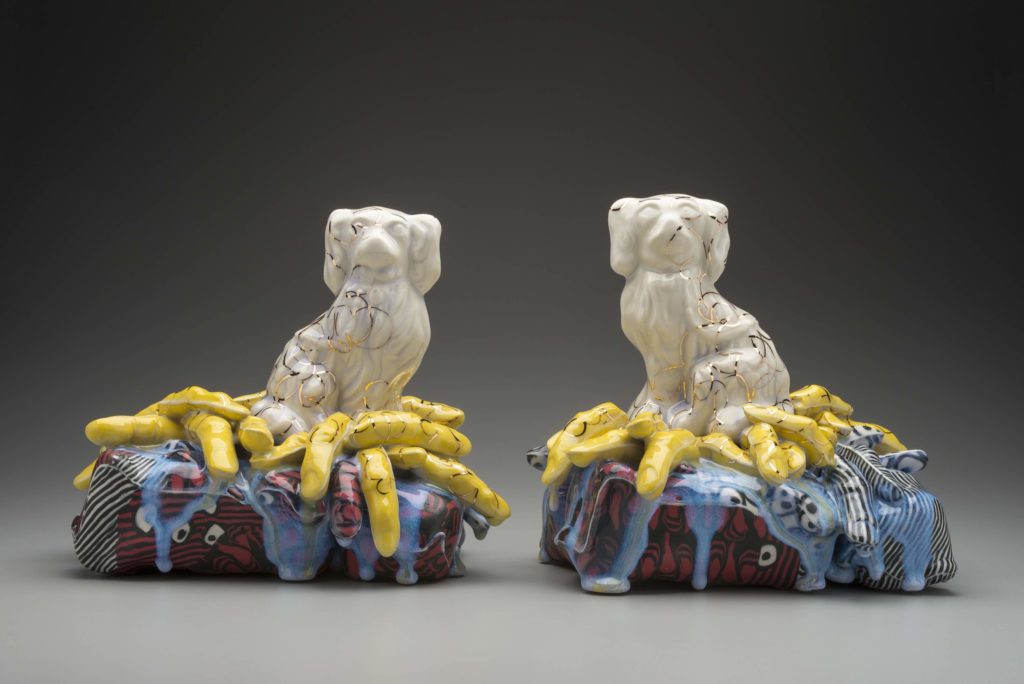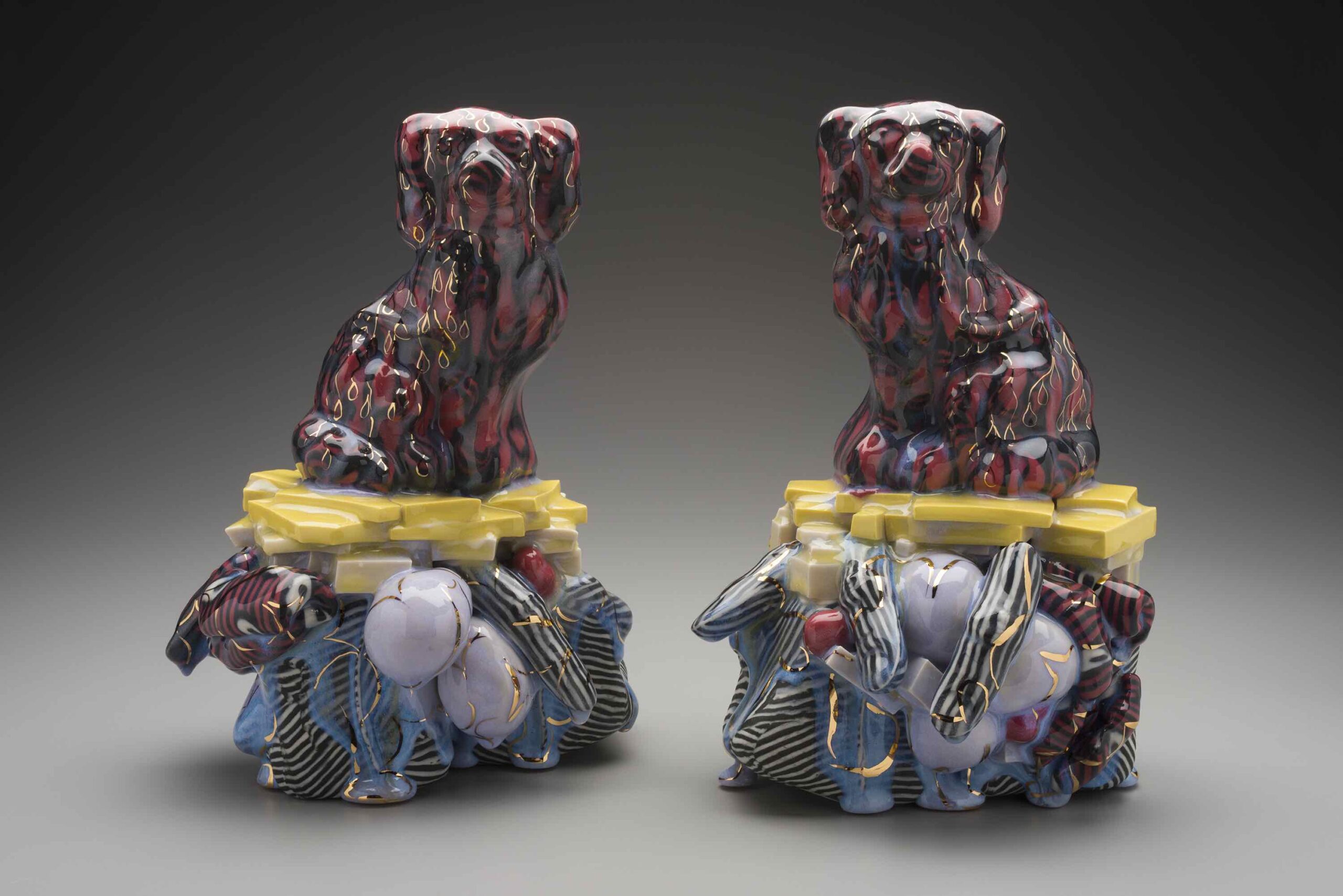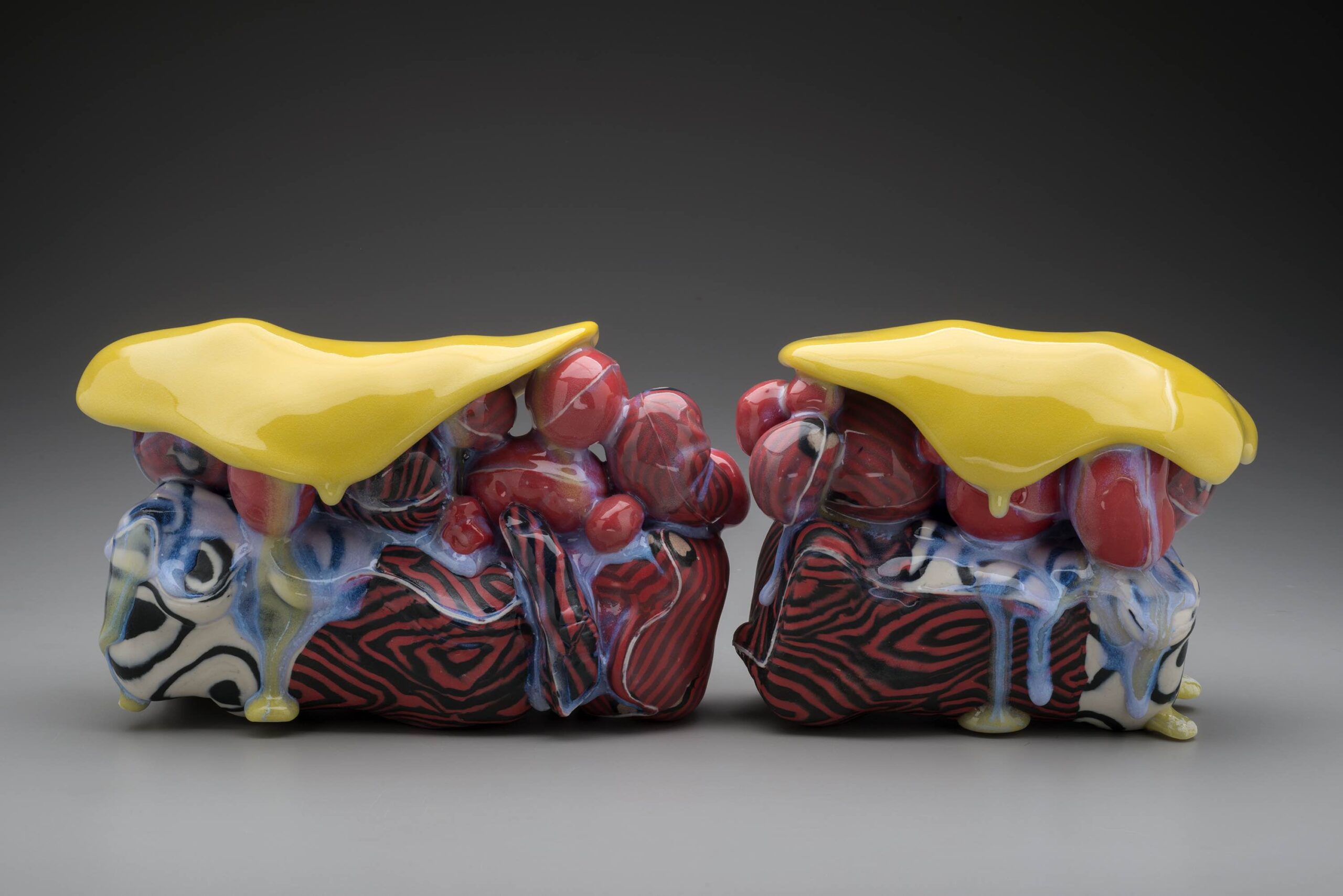
Raised in East Texas, ceramist Katherine Taylor is part of a long lineage of frontierswomen. Her work had always drawn from the tradition of decorative arts in early-20th-century Texas, but after traveling to Taiwan, Hong Kong, China, Italy, and Norway, Taylor began incorporating different stylistic techniques. In Taiwan, she learned that the content and design of a sculptural work were inseparable—that those multicolored, layered glazes were as important as the clay itself, sculpturally and aesthetically. “I began to understand that the process is the visual culture,” Taylor said.
Although she now lives outside Austin, her family’s history in eastern and central Texas continues to inform her work. In the early 1900s in eastern and central Texas, she explained, Victorian Staffordshire dogs—medium-sized ceramic figurines modeled after English lapdogs—were used to prop open the doors of clapboard farmhouses. “There’s good culture and fine culture—social things that connected Texan women to England,” explained Taylor. “I wanted to put those sculptures together with images of fingers to represent their pain and struggle in Texas.”
In these works, dogs sit atop disembodied fingers that curl around the base of the sculpture. The patterns and colors—blues, golds, lavenders—suggest traditional Chinese ceramic art, although symbolic nods to Texas are ever present. “There’s a bunch of rectangles in my work,” she said. “People from the panhandle of Texas recognize those as cotton bales in a yellow or red.”



